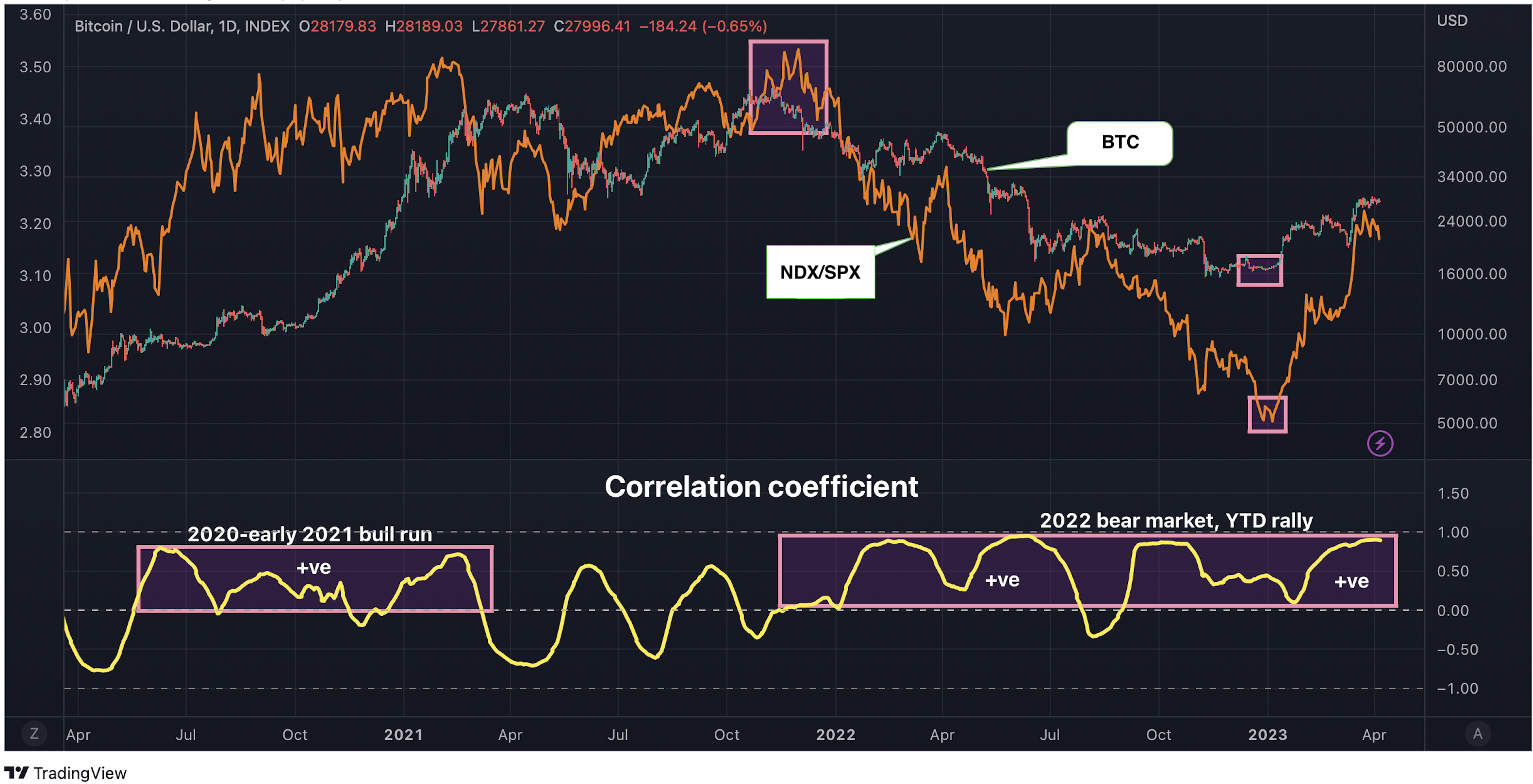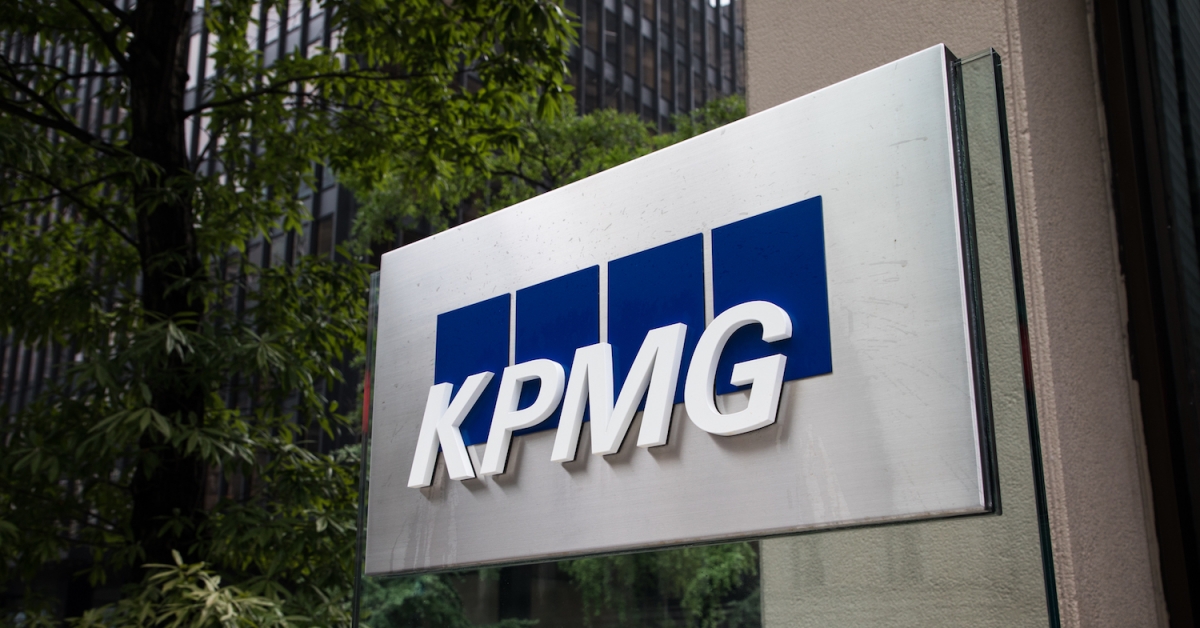Bitcoin’s Tight Correlation With Tech Stocks Muddies Safe Haven Narrative
Alex Thorn
Head of Firmwide Research
Galaxy
Hear Alex Thorn share his take on “Bitcoin and Inflation: It’s Complicated” at Consensus 2023.
Alex Thorn
Head of Firmwide Research
Galaxy
Hear Alex Thorn share his take on “Bitcoin and Inflation: It’s Complicated” at Consensus 2023.
:format(jpg)/www.coindesk.com/resizer/jX7WPvpd1pYeRAy6SoZTU_N_Zl0=/arc-photo-coindesk/arc2-prod/public/ISMDW3SATBA25J4ZU65XNCUANE.jpg)
Omkar Godbole was a senior reporter on CoinDesk’s Markets team.
Alex Thorn
Head of Firmwide Research
Galaxy
Hear Alex Thorn share his take on “Bitcoin and Inflation: It’s Complicated” at Consensus 2023.
Alex Thorn
Head of Firmwide Research
Galaxy
Hear Alex Thorn share his take on “Bitcoin and Inflation: It’s Complicated” at Consensus 2023.
Bitcoin’s price rose 23% in March as multiple U.S. banks went bust, bolstering recession fears.
Several analysts have called the move higher a safe haven rally – with the price gain being attributed to investors seeking shelter in the top cryptocurrency amid bank failures.
Bitcoin, however, rose in tandem with the Nasdaq to S&P 500 (NDX/SPX) ratio, a sign the rally was partly, if not mainly, driven by improved risk appetite stemming from hopes for an early Federal Reserve (Fed) pivot in favor of liquidity-boosting rate cuts.
The NDX/SPX ratio measures the relative difference in valuation between technology stocks represented in the Nasdaq 100 and a basket of broader industry stocks from the S&P 500.
The ratio rose by 5.65% in March, capping its best monthly performance since February 2009, as banking sector instability saw traders aggressively reinstate bets that the Fed would cut rates later this year. Nasdaq surged nearly 10%, outperforming the S&P 500’s 3.5% gain by a big margin.
The 90-day correlation coefficient between bitcoin and the NDX/SPX ratio rose from 0.81 to 0.90, signaling the strongest positive relationship between the two assets since June 2022. At press time, the correlation coefficient stood at 0.89. The positive correlation means on days when the ratio rises, bitcoin is more likely to do the same and vice versa.
“BTC is still trading like a risk asset,” Noelle Acheson, the author of the popular Crypto is Macro Now newsletter, said, referring to the positive correlation between bitcoin and the NDX/SPX ratio. “The rising NDX/SPX ratio means tech is doing better, which says risk sentiment is strong.”
Technology stocks tend to be more sensitive to interest rate expectations than the broader market. Thus a rising ratio is often equated with dovish Fed expectations and improved investor risk appetite that often percolates into other assets like cryptocurrencies, as observed in 2020 and early 2021. A falling ratio represents risk-off sentiment.
“Much like crypto, growth-style companies which are expected to provide cash flows, or some form of fundamental value, further out into the future find their performance more heavily influenced by shifts in interest rates. The Nasdaq 100 index, for example, is comprised of mostly growth-style sectors, such as technology, which are more sensitive to rising or falling rate expectations,” Gabriel Selby, Lead Research Analyst at CF Benchmarks, told CoinDesk in an email.
Selby added that as the NDX/SPX ratio is closely tracking the crypto market, it suggests interest rate expectations are in the driver’s seat and the pricing divergence between equities and crypto markets may not be as wide as initially thought.

Bitcoin and the NDX/SPX ratio bottomed out in late 2022. (TradingView/CoinDesk) (TradingView/CoinDesk)
The correlation between bitcoin and the NDX/SPX ratio was consistently positive during the 2022 bear market and between May 2020 and March 2021, when the cryptocurrency rallied nearly tenfold to $60,000.
If that’s not enough, both have been rallying in lockstep since early January. While bitcoin has risen nearly 70% this year, the ratio is up 11.26%.
Bitcoin’s pause at around $28,000 since March 22 is consistent with the consolidation in the NDX/SPX ratio.
While bitcoin’s near-term prospects appear tied to gyrations in the NDX/SPX ratio, it could benefit from fears of fiat currency devaluations over time, according to Acheson.
“BTC is still (and always will be) a risk asset for traditional investors. It is also likely to be regarded as a safe haven,” Acheson said. “We are likely to see continued accumulation from longer-term investors interested in its currency debasement hedge properties, while short-term moves are dictated by shifting theories about what monetary liquidity will do.”
Edited by Oliver Knight.
DISCLOSURE
Please note that our
privacy policy,
terms of use,
cookies,
and
do not sell my personal information
has been updated
.
The leader in news and information on cryptocurrency, digital assets and the future of money, CoinDesk is a media outlet that strives for the highest journalistic standards and abides by a
strict set of editorial policies.
CoinDesk is an independent operating subsidiary of
Digital Currency Group,
which invests in
cryptocurrencies
and blockchain
startups.
As part of their compensation, certain CoinDesk employees, including editorial employees, may receive exposure to DCG equity in the form of
stock appreciation rights,
which vest over a multi-year period. CoinDesk journalists are not allowed to purchase stock outright in DCG
.
:format(jpg)/www.coindesk.com/resizer/jX7WPvpd1pYeRAy6SoZTU_N_Zl0=/arc-photo-coindesk/arc2-prod/public/ISMDW3SATBA25J4ZU65XNCUANE.jpg)
Omkar Godbole was a senior reporter on CoinDesk’s Markets team.
Learn more about Consensus 2023, CoinDesk’s longest-running and most influential event that brings together all sides of crypto, blockchain and Web3. Head to consensus.coindesk.com to register and buy your pass now.
:format(jpg)/www.coindesk.com/resizer/jX7WPvpd1pYeRAy6SoZTU_N_Zl0=/arc-photo-coindesk/arc2-prod/public/ISMDW3SATBA25J4ZU65XNCUANE.jpg)
Omkar Godbole was a senior reporter on CoinDesk’s Markets team.









